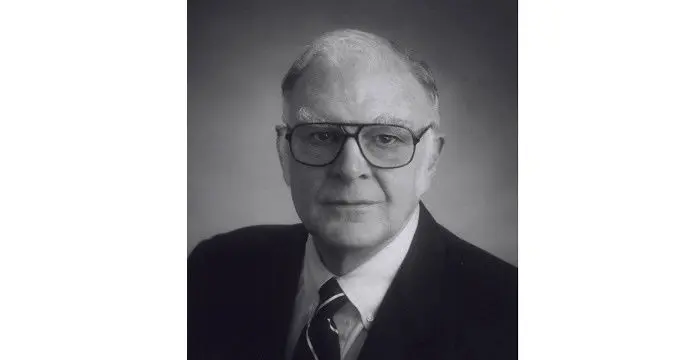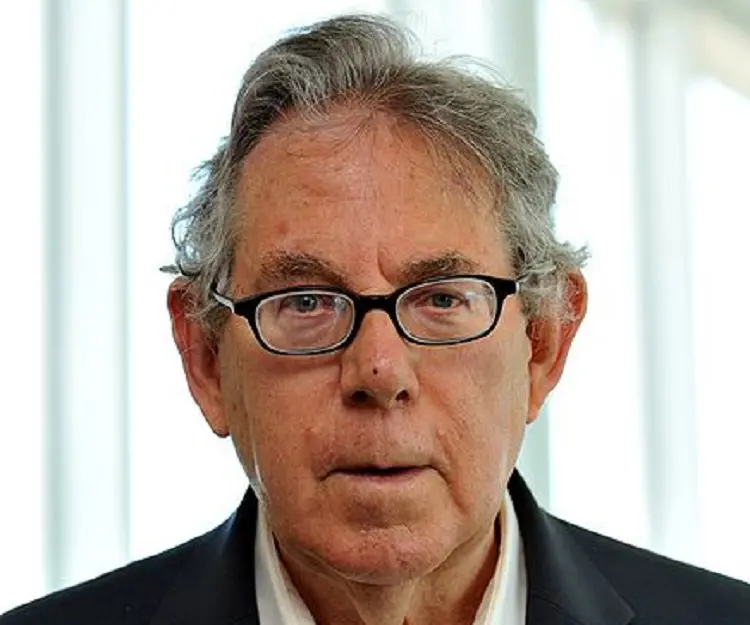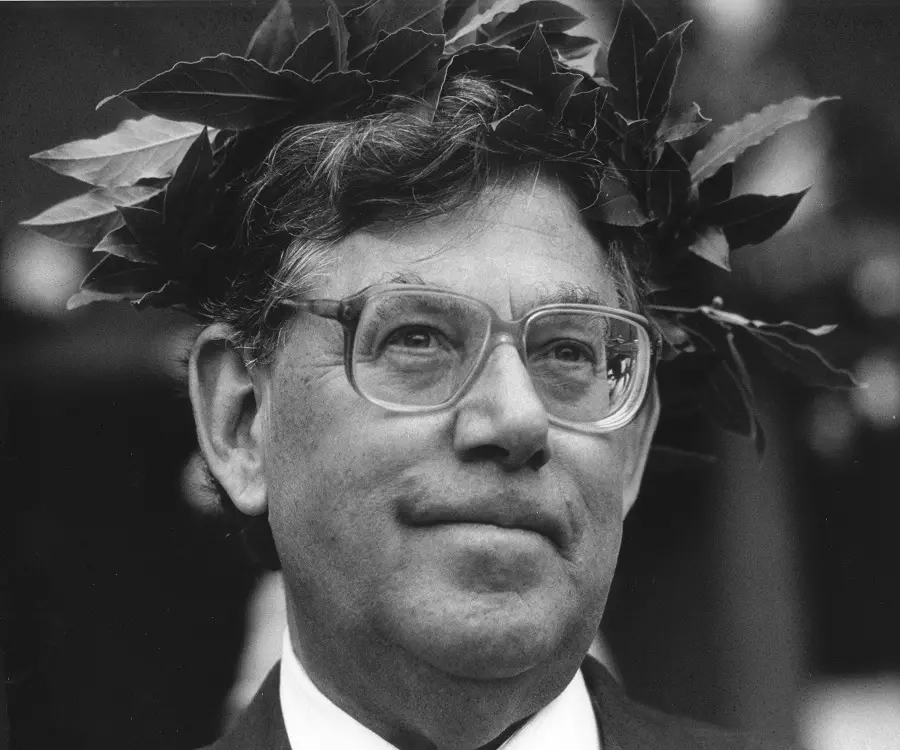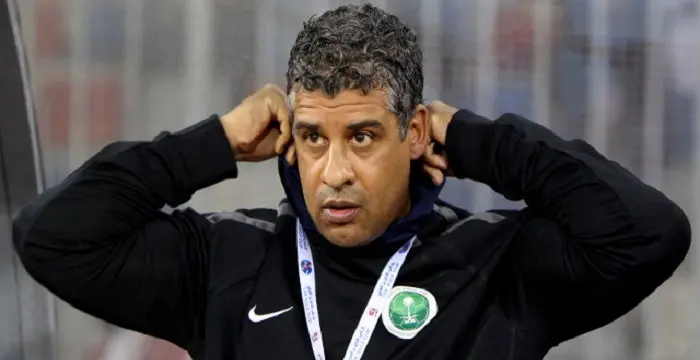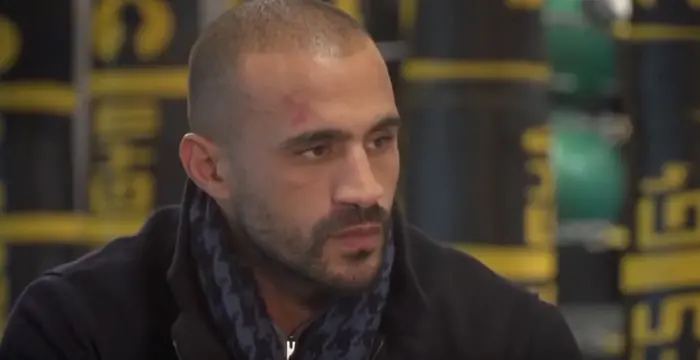
Paul J. Crutzen - Atmospheric Chemist, Facts and Family
Paul J. Crutzen's Personal Details
Paul Jozef Crutzen is a Dutch atmospheric chemist, well-known for his work on ozone depletion and global warming
| Information | Detail |
|---|---|
| Birthday | December 3, 1933 |
| Nationality | Dutch |
| Famous | Scientists, Chemists, Atmospheric Chemist |
| Spouses | Terttu Soininen (m. 1958) |
| Known as | Paul Jozef Crutzen |
| Childrens | Liona Crutzen, Sylvia Crutzen |
| Birth Place | Amsterdam, Netherlands |
| Gender | Male |
| Sun Sign | Sagittarius |
| Born in | Amsterdam, Netherlands |
| Famous as | Atmospheric Chemist |
// Famous Atmospheric Chemist
Frank Sherwood Rowland
Frank Sherwood Rowland was an American chemist who won the 1995 Nobel Prize in Chemistry. Check out this biography to know about his childhood, life, achievements, works & timeline.
Paul J. Crutzen's photo
Who is Paul J. Crutzen?
Paul Jozef Crutzen is a Dutch atmospheric chemist, well-known for his work on ozone depletion and global warming. He won the 1995 Nobel Prize in Chemistry for his work in atmospheric chemistry, particularly concerning the formation and decomposition of ozone. He was born in early 1930s, around seven years before Netherlands came under Nazi occupation. Brought up under a harsh condition by his working class parents, he managed to complete his schooling in time; but missed getting a university stipend. Therefore, he enrolled at a Middelbare Technische School and worked his way up to become a civil engineer. Later he joined the Department of Meteorology at the University of Stockholm as a computer programmer and at the same time began enhancing his academic qualifications, acquiring first a MS and then a PhD on photochemistry of atmospheric ozone. Later while working as a postdoctoral fellow in England he established his theory of ozone depletion and also demonstrated that increased use of nitrogen-rich fertilizers and fossil fuel is responsible for such a phenomenon. The work later earned him the Nobel Prize in Chemistry. He spent his later years working on global warming and is one of promoters of the theory of nuclear winter. He believes that, "Nuclear war could easily mean the destruction of not only our race, but most of the planetary life as well”.
// Famous Chemists
Henry Cavendish
Henry Cavendish was a theoretical chemist and physicist, renowned for discovery of hydrogen and calculation of the mass of earth. To know more about his childhood, profile, timeline and career read on
Walter Kohn
Nobel Laureate Walter Kohn was an Austrian-born American theoretical chemist and physicist. Check out this biography to know about his childhood, life, achievements, works & timeline.
Jabir Ibn Hayyan
Jabir Ibn Hayyan was a medieval era polymath. Check out this biography to know about his life, works and achievements.
Childhood & Early Life
Paul Jozef Crutzen was born on December 3, 1933, in Amsterdam. His father, Jozef Crutzen, originally from Vaal, worked as waiter in Amsterdam. His mother, Anna Gurk, was of mixed Polish and German ancestry; she came to the city from Ruhr region of Germany as a housekeeper. He also has a sister.
Paul entered the elementary school, popularly known as ‘de grote school’, in September 1940; a few months after Netherland was taken over by Germany. Since their school building was confiscated by the Nazis, the classes were taken in different premises.
The situation became even worse during the last months of the Second World War, particularly between the fall of 1944 and the Liberation Day on May 5, 1945. Food, water and heating fuels were scarce and many of his classmates died of hunger and disease during that period.
Classes too were irregular; as a result, most of the children lost a year. However, Paul was able to get outside help and so he was one of the few children, who were promoted to the final class without having to lose a year.
In 1946, he completed his elementary education and entered Hogere Burgerschool (Higher Citizen School). Here, apart from normal curricula, they had to learn English, French and German. Although he did well in them, physics and mathematics was his favorite subject.
Paul J. Crutzen passed out from Hogere Burgerschool in 1951. Unfortunately, due to heavy fever, his grades in the final exam were not good. Therefore, he did not qualify for university stipend.
It meant, if he wanted to go to university, his parents, whose financial condition was not at all good, would have to support him for four more years. Therefore, he decided to enroll at Middelbare Technische School (MTS), which was a middle technical school and become a civil engineer.
The advantage of enrolling at MTS was that, although it took three years to finish the course, he could work and earn a salary in the second year. With that, he was able to complete his studies and received his degree in 1954.
Career
In 1954, soon after receiving his degree in civil engineering, Crutzen joined Bridge Construction Bureau of the City of Amsterdam. His service was interrupted in 1956, when he was called to undergo the 21-months compulsory military service.
On being released from military service, he rejoined Bridge Construction Bureau in early 1958; but pined for academic service. So when he saw an advertisement, seeking a computer programmer for the Department of Meteorology of Stockholm Högskola (later Stockholm University), he applied for the job and got it too.
On July 1, 1959, Crutzen joined his new position at Stockholm. Although he did not have any experience in the field of computer programming he quickly got used to the mathematical complexity of early programming and created computer programs suitable for meteorological work.
Concurrently, he also attended lectures on mathematics, mathematical statistics, and meteorology at the University, ultimately receiving his filosofie kandidat (corresponding to MS) degree in 1963. Unfortunately, he could not study physics or chemistry because those subjects required laboratory work, which he could not afford. Thus he became a pure theoretician.
Meanwhile, he kept working in various meteorological projects, helping to build and run some of the first barotropic weather prediction models. Sometime in 1965, he was asked to help a US scientist to develop a numerical model of the oxygen allotrope distribution in different layers of the atmosphere.
Working on it, he became highly interested in the photochemistry of atmospheric ozone and decided to write his filosofie licentiat thesis (comparable to a Ph.D. thesis) on it. His paper was titled ‘Determination of parameters appearing in the 'dry' and the 'wet' photochemical theories for ozone in the stratosphere’.
Subsequently, he received his doctoral degree in 1968. Next in 1969, he joined the European Space Research Organization at the Clarendon Laboratory of the University of Oxford, England as a post-doctoral fellow.
In 1970, while working there, Crutzen established how the ozone layer in the stratosphere is depleted by nitrous oxide released from the Earth’s surface. The work later earned him the Nobel Prize in Chemistry.
In 1971, after the completion of his postdoctoral term, he returned to Stockholm University as Research Associate. By the time he left Stockholm in 1974, he had become a Research Professor.
In 1974, Crutzen joined National Center for Atmospheric Research (located at Boulder, Colorado, USA) as a Research Professor in its Upper Atmosphere Project. In 1977, he was made a Senior Scientist and also the Director of the Air Quality Division at the same institute. He served in this capacity till July 1980.
Concurrently, he also served Aeronomy Laboratory, Environmental Research Laboratories, National Oceanic and Atmospheric Administration (also at Boulder) as a consultant. From 1977 to 1981, he was also an Adjunct professor at the Atmospheric Sciences Department, Colorado State University, Fort Collins, Colorado
In 1980, he returned to Europe as the Director of the Atmospheric Chemistry Division, Max-Planck-Institute for Chemistry, Mainz, West Germany. Concurrently, he was also Member of the Max-Planck-Society for the Advancement of Science.
In 1982, he promoted the theory of ‘Nuclear Winter’. Together with John Birks, he theorized that in case of nuclear war, sooty smoke arising out of fires from industrial centers, oil storage facilities and forests would reach the middle and higher troposphere. They concluded that absorption of sunlight by this black smoke could cause darkness and also strong cooling on the surface of the earth.
In 1983, he became Executive Director, Max-Planck-Institute for Chemistry, remaining in that position till 1985. Thereafter, he gave up the post to remain as a scholar at the same institute till 2000. Concurrently, he also acted as part time professor in many established universities and institutes in the USA and Germany.
In 2004, he became a scholar at the International Institute for Applied Systems Analysis, Laxenburg, Austria, where he continued his work on global warming.
In 2006, he proposed that to emphasize the role of mankind in geological as well as ecological condition of the earth the current geological epoch can be termed as Anthropocene.
In January 2008, Crutzen published his last important paper. In it he established that as nitrous oxide is released in the production of biofuels, they contribute more to global warming than the fossil fuels they intend to replace.
Major Works
Crutzen is the first scientist to establish that human activity could affect the stratospheric ozone layer and endanger life on earth. In 1970, he established that nitrous oxide (N2O), which is produced by soil bacteria and emitted from the Earth’s surface, is the main cause for such depletion.
He demonstrated that since N2O is a stable gas it can reach stratosphere. There, it reacts with the ultraviolet radiation present in the ozone layer and produces nitric acid and oxygen. This causes depletion in the ozone layer. Later, he also noted that increased use of nitrogen rich fertilizers and fossil fuel might have led to such a phenomenon.
Awards & Achievements
In 1995, Paul J. Crutzen received the Nobel Prize in Chemistry for his “work in atmospheric chemistry, particularly concerning the formation and decomposition of ozone". He shared the award with Mario J. Molina and F. Sherwood Rowland, who had independently worked on the same topic.
Also in 1995, he received United Nations Environment Ozone Awards for Outstanding Contribution for the Protection of the Ozone Layer.
Some other significant prizes received by him were Tyler Prize for Environmental Achievement (1989) and Volvo Environment Prize (1991), Deutscher Umweltpreis of the Umweltstiftung (1994) .
In 2006, he became a Foreign Member of the Royal Society. He is also a Foreign Associate of the U.S. National Academy of Sciences, Member of the Royal Swedish Academy of Sciences.
Personal Life & Legacy
In 1956, while on a visit to Switzerland, Crutzen met Terttu Soininen, a Finish student history and literature, working as an au pair in Lucerne. They got married in February 1958. They have two daughters, Ilona and Sylvia
Trivia
To bring down the global temperature, Crutzen proposed that particles of sulphur can be released in the upper atmosphere so that the sunlight and heat is reflected back into space. Although little bizarre, scientists are now working on such possibilities.
// Famous Scientists
Juliane Koepcke
Juliane Koepcke is a German-Peruvian biologist, who was the lone survivor among the 92 passengers and crew of the ill-fated LANSA Flight 508 that crashed in the Peruvian rainforest on 24 December 1971. Know more about her life in this biography.
Henry Cavendish
Henry Cavendish was a theoretical chemist and physicist, renowned for discovery of hydrogen and calculation of the mass of earth. To know more about his childhood, profile, timeline and career read on
Konstantin Tsiolkovsky
Konstantin Tsiolkovsky was a Russian rocket scientist and a pioneer of astronautics. This biography provides detailed information about his childhood, family, personal life, career, achievements, etc.
Paul J. Crutzen's awards
| Year | Name | Award |
|---|---|---|
Other | ||
| 0 | 1995 - Nobel Prize in Chemistry | |
| 0 | 1989 - Tyler Prize for Environmental Achievement | |
Paul J. Crutzen biography timelines
- // 3rd Dec 1933Paul Jozef Crutzen was born on December 3, 1933, in Amsterdam. His father, Jozef Crutzen, originally from Vaal, worked as waiter in Amsterdam. His mother, Anna Gurk, was of mixed Polish and German ancestry; she came to the city from Ruhr region of Germany as a housekeeper. He also has a sister.
- // Sep 1940Paul entered the elementary school, popularly known as ‘de grote school’, in September 1940; a few months after Netherland was taken over by Germany. Since their school building was confiscated by the Nazis, the classes were taken in different premises.
- // 1944 To 5th May 1945The situation became even worse during the last months of the Second World War, particularly between the fall of 1944 and the Liberation Day on May 5, 1945. Food, water and heating fuels were scarce and many of his classmates died of hunger and disease during that period.
- // 1946In 1946, he completed his elementary education and entered Hogere Burgerschool (Higher Citizen School). Here, apart from normal curricula, they had to learn English, French and German. Although he did well in them, physics and mathematics was his favorite subject.
- // 1951Paul J. Crutzen passed out from Hogere Burgerschool in 1951. Unfortunately, due to heavy fever, his grades in the final exam were not good. Therefore, he did not qualify for university stipend.
- // 1954The advantage of enrolling at MTS was that, although it took three years to finish the course, he could work and earn a salary in the second year. With that, he was able to complete his studies and received his degree in 1954.
- // 1954 To 1956In 1954, soon after receiving his degree in civil engineering, Crutzen joined Bridge Construction Bureau of the City of Amsterdam. His service was interrupted in 1956, when he was called to undergo the 21-months compulsory military service.
- // 1956 To Feb 1958In 1956, while on a visit to Switzerland, Crutzen met Terttu Soininen, a Finish student history and literature, working as an au pair in Lucerne. They got married in February 1958. They have two daughters, Ilona and Sylvia
- // 1958On being released from military service, he rejoined Bridge Construction Bureau in early 1958; but pined for academic service. So when he saw an advertisement, seeking a computer programmer for the Department of Meteorology of Stockholm Högskola (later Stockholm University), he applied for the job and got it too.
- // 1st Jul 1959On July 1, 1959, Crutzen joined his new position at Stockholm. Although he did not have any experience in the field of computer programming he quickly got used to the mathematical complexity of early programming and created computer programs suitable for meteorological work.
- // 1963Concurrently, he also attended lectures on mathematics, mathematical statistics, and meteorology at the University, ultimately receiving his filosofie kandidat (corresponding to MS) degree in 1963. Unfortunately, he could not study physics or chemistry because those subjects required laboratory work, which he could not afford. Thus he became a pure theoretician.
- // 1965Meanwhile, he kept working in various meteorological projects, helping to build and run some of the first barotropic weather prediction models. Sometime in 1965, he was asked to help a US scientist to develop a numerical model of the oxygen allotrope distribution in different layers of the atmosphere.
- // 1968 To 1969Subsequently, he received his doctoral degree in 1968. Next in 1969, he joined the European Space Research Organization at the Clarendon Laboratory of the University of Oxford, England as a post-doctoral fellow.
- // 1970In 1970, while working there, Crutzen established how the ozone layer in the stratosphere is depleted by nitrous oxide released from the Earth’s surface. The work later earned him the Nobel Prize in Chemistry.
- // 1970Crutzen is the first scientist to establish that human activity could affect the stratospheric ozone layer and endanger life on earth. In 1970, he established that nitrous oxide (N2O), which is produced by soil bacteria and emitted from the Earth’s surface, is the main cause for such depletion.
- // 1971 To 1974In 1971, after the completion of his postdoctoral term, he returned to Stockholm University as Research Associate. By the time he left Stockholm in 1974, he had become a Research Professor.
- // 1977 To 1981Concurrently, he also served Aeronomy Laboratory, Environmental Research Laboratories, National Oceanic and Atmospheric Administration (also at Boulder) as a consultant. From 1977 to 1981, he was also an Adjunct professor at the Atmospheric Sciences Department, Colorado State University, Fort Collins, Colorado
- // 1980In 1980, he returned to Europe as the Director of the Atmospheric Chemistry Division, Max-Planck-Institute for Chemistry, Mainz, West Germany. Concurrently, he was also Member of the Max-Planck-Society for the Advancement of Science.
- // 1982In 1982, he promoted the theory of ‘Nuclear Winter’. Together with John Birks, he theorized that in case of nuclear war, sooty smoke arising out of fires from industrial centers, oil storage facilities and forests would reach the middle and higher troposphere. They concluded that absorption of sunlight by this black smoke could cause darkness and also strong cooling on the surface of the earth.
- // 1995In 1995, Paul J. Crutzen received the Nobel Prize in Chemistry for his “work in atmospheric chemistry, particularly concerning the formation and decomposition of ozone". He shared the award with Mario J. Molina and F. Sherwood Rowland, who had independently worked on the same topic.
- // 1995Also in 1995, he received United Nations Environment Ozone Awards for Outstanding Contribution for the Protection of the Ozone Layer.
- // 2004In 2004, he became a scholar at the International Institute for Applied Systems Analysis, Laxenburg, Austria, where he continued his work on global warming.
- // 2006In 2006, he proposed that to emphasize the role of mankind in geological as well as ecological condition of the earth the current geological epoch can be termed as Anthropocene.
- // 2006In 2006, he became a Foreign Member of the Royal Society. He is also a Foreign Associate of the U.S. National Academy of Sciences, Member of the Royal Swedish Academy of Sciences.
- // Jan 2008In January 2008, Crutzen published his last important paper. In it he established that as nitrous oxide is released in the production of biofuels, they contribute more to global warming than the fossil fuels they intend to replace.
// Famous Dutch peoples
Nikkie De Jager
Check out all that you wanted to know about Nikkie De Jager, the famous Dutch Makeup artist; her birthday, her family and personal life, her boyfriends, fun trivia facts and more.
Romee Strijd
Romee Strijd is a Dutch model, also known as a 'Victoria's Secret Angel.' Check out this biography to know about her family, personal life, including her age, birthday, etc.
Nisrina Sbia
Nisrina Sbia is a social media influencer and model who rose to fame and has made it big on Instagram. Check out this biography to know about her birthday, childhood, family life, achievements and fun facts about her.
Jelle Van Vucht
Jelle Van Vucht is a Dutch YouTube star and gamer. Let’s have a look at his age, family life, birthday, net worth, girlfriends, and some fun facts.
Frank Rijkaard
Frank Rijkaard is a retired Dutch footballer often regarded as one of the greatest defensive midfielders. This biography profiles his childhood, life, football career, achievements and timeline.
Badr Hari
Badr Hari is a Moroccan-Dutch super heavyweight kickboxer. Check out this biography to know about his childhood, family life, achievements and fun facts about his life.
Paul J. Crutzen's FAQ
What is Paul J. Crutzen birthday?
Paul J. Crutzen was born at 1933-12-03
Where is Paul J. Crutzen's birth place?
Paul J. Crutzen was born in Amsterdam, Netherlands
What is Paul J. Crutzen nationalities?
Paul J. Crutzen's nationalities is Dutch
Who is Paul J. Crutzen spouses?
Paul J. Crutzen's spouses is Terttu Soininen (m. 1958)
Who is Paul J. Crutzen childrens?
Paul J. Crutzen's childrens is Liona Crutzen, Sylvia Crutzen
What is Paul J. Crutzen's sun sign?
Paul J. Crutzen is Sagittarius
How famous is Paul J. Crutzen?
Paul J. Crutzen is famouse as Atmospheric Chemist
